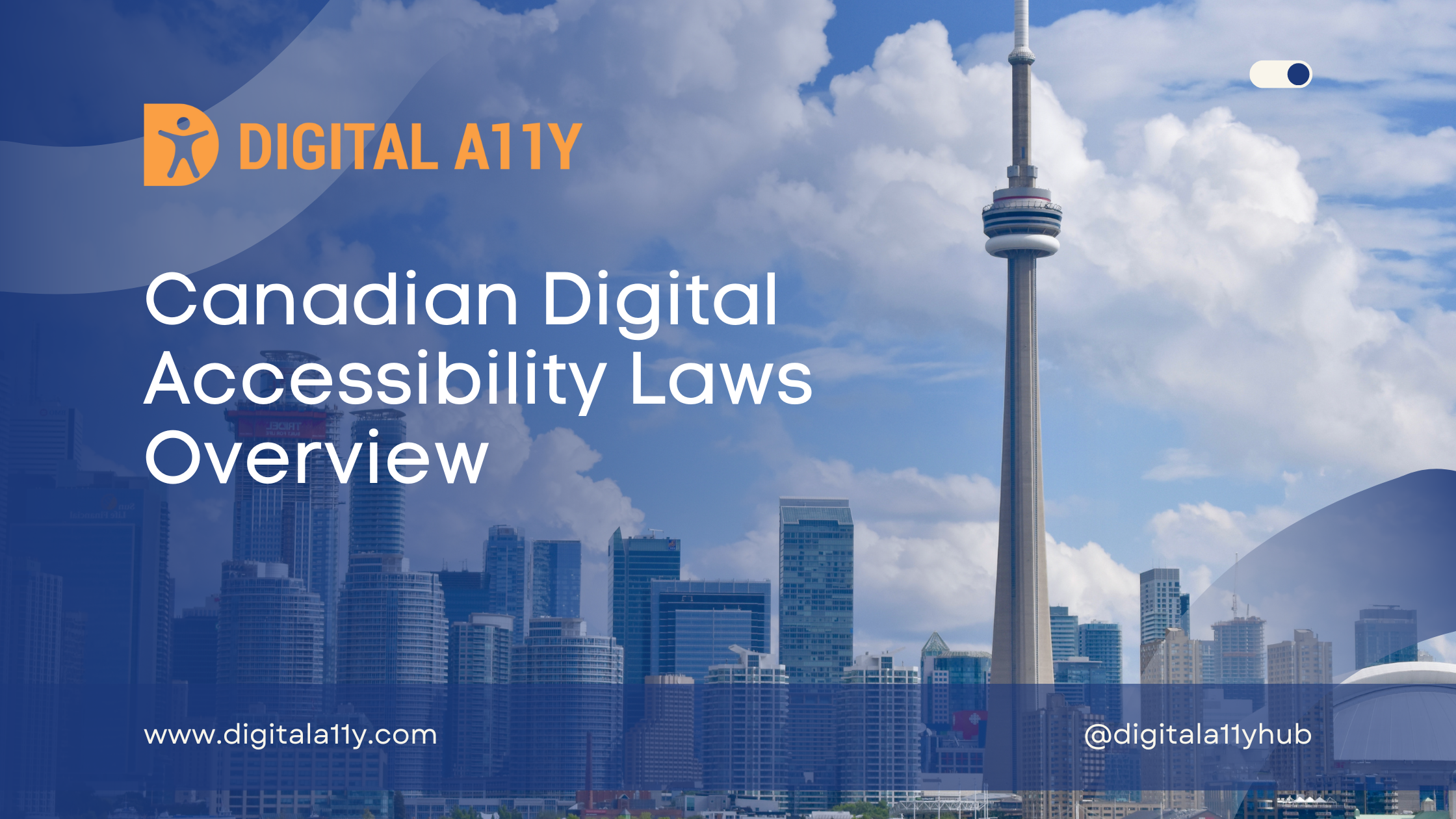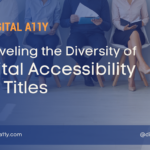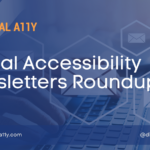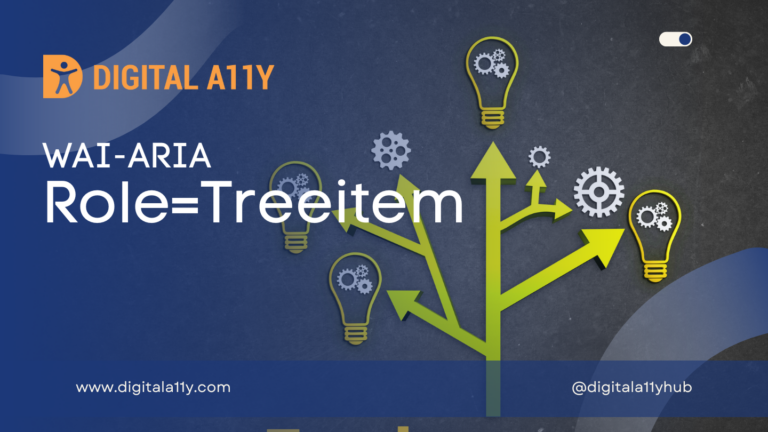Canadian Digital Accessibility Laws Overview

As someone who is new to the digital accessibility space, there is so much to learn and absorb. Understanding the nuances of WCAG itself is a challenge, and the number of accessibility laws across different countries can feel overwhelming. While I was primarily familiar with ADA and Section 508 compliance requirements, a recent interaction with a client prompted me to dig deeper into the digital accessibility laws of Canada.
This article provides an overview of the digital accessibility laws in Canada, In this post, I’ll break down the key accessibility laws in Canada, highlight what they mean for digital products, and share useful links to help you dig deeper.
Disability Stats in Canada
Canada is a country with 10 provinces and 3 territories with a population of 40,032,674 and out of which 8.0 million people have one or more disabilities.
The 2022 Canadian Survey on Disability (CSD) revealed: 27% of Canadians aged 15 and older, or 8.0 million people, had one or more disabilities that limited daily activities.
This represents a 5 percentage point increase from 2017, when: 22% of Canadians, or 6.2 million people, reported having one or more disabilities.
Contributing factors to the increase include:
- An aging population
- A significant rise in mental health-related disabilities among youth and working-age adults.
- In 2022, the disability rate was higher among women (30%) than men (24%), continuing the trend from 2017.
Accessibility laws in Canada are evolving—and for good reason. With more of our daily lives happening online, making sure digital spaces are inclusive has never been more important. Whether you’re a business owner, a developer, or an organization trying to meet compliance standards, it’s essential to understand how Canadian laws impact digital accessibility.
A Patchwork of Laws Across the Country
Unlike the U.S., where federal laws like the ADA and Section 508 set the tone nationally, Canada has a mix of federal and provincial accessibility legislation. That means depending on where your business operates—or who you serve—you might fall under different rules.
1. Accessible Canada Act (ACA) – Federal
The Accessible Canada Act came into effect in 2019 and is Canada’s first national accessibility law. It applies to federally regulated industries such as:
- Telecommunications
- Banking
- Transportation (airlines, rail, ferry, etc.)
- Broadcasting
- Federal government departments and Crown corporations
The goal? A barrier-free Canada by 2040.
Key Points:
- Organizations must identify, remove, and prevent barriers.
- They must publish accessibility plans and update them every 3 years.
- There’s a focus on digital accessibility, especially for federal websites and services.
Digital accessibility in the ACA is based on the Web Content Accessibility Guidelines (WCAG)—although the act itself doesn’t mandate a specific version, WCAG 2.1 Level AA is commonly referenced as the standard to meet.
2. Provincial Accessibility Laws
Some provinces have their own laws that go further than federal regulations. Here’s a quick breakdown of the most relevant ones for digital accessibility:
Ontario – Accessibility for Ontarians with Disabilities Act (AODA)
Ontario leads the way with the AODA, which was passed in 2005 and aims for full accessibility by 2025.
Digital Requirements:
- Private and non-profit organizations with 50+ employees, and all public sector organizations, must ensure their websites and web content comply with WCAG 2.0 Level AA.
- New websites or significantly refreshed ones must meet this standard.
- Accessibility compliance reports are required.
Non-compliance can result in hefty fines—up to $100,000/day for corporations.
Manitoba – Accessibility for Manitobans Act (AMA)
The Accessibility for Manitobans Act (AMA) became law back in December 2013, making Manitoba the second province—after Ontario—to roll out its own accessibility legislation.
This law impacts everyone in Manitoba. It’s designed to help remove barriers faced by people with disabilities and also supports those who are in a position to identify, remove, and prevent those barriers in the first place.
The AMA is built on five key standards that aim to create real, measurable, and lasting improvements in accessibility. Each standard comes with clear requirements and timelines that organizations need to follow to stay compliant with the Act.
The Five Accessibility Standards under AMA:
- Customer Service Standard
Focuses on ensuring accessible customer service, so people with disabilities can receive services that respect their dignity and independence. - Employment Standard
Aims to create inclusive hiring practices and support employees with disabilities throughout the employment cycle. - Information and Communication Standard
Makes sure information—whether digital, print, or verbal—is clear and accessible to everyone. - Transportation Standard
Improves accessibility in public transportation so people with disabilities can travel safely and independently. - Design of Public Spaces Standard
Ensures that outdoor public areas like parks, sidewalks, and parking lots are designed with accessibility in mind.
Web Accessibility Under the Accessibility for Manitobans Act
Enacted in May 2022, the Accessible Information and Communication Standard under the Accessibility for Manitobans Act (AMA) mandates that organizations ensure their digital content is accessible to all Manitobans. This includes compliance with the Web Content Accessibility Guidelines (WCAG) 2.1 Level AA for:
- New or significantly updated websites and web applications used to access an organization’s goods and services.
- Existing web content that is essential for accessing an organization’s services must be updated to meet these standards.
Public sector organizations are also required to apply these standards to their intranet content.
Additionally, organizations must:
- Inform the public and employees that information can be requested in accessible formats or with communication supports.
- Provide accessible information promptly and at no additional cost upon request.
- Develop a feedback process to receive and respond to accessibility-related comments.
- Offer training on accessible communication to relevant staff members.
Exceptions to these requirements are limited and apply only when compliance is not technically feasible, the necessary technology is unavailable, or it would cause undue hardship to the organization.
For more detailed information, you can refer to the official Accessible Information and Communication Standard Regulation.
Nova Scotia – Accessibility Act
Passed in 2017, the Nova Scotia Accessibility Act aims for an accessible Nova Scotia by 2030. In Nova Scotia, the Accessibility Directorate leads the charge when it comes to implementing the Accessibility Act and pushing forward disability-related initiatives within the government.
They’re working hand-in-hand with people with disabilities, local municipalities, businesses, colleges and universities, and others to make Nova Scotia fully accessible by 2030.
The first standard is already in effect:
- Built Environment Accessibility Standard – This one focuses on making buildings and outdoor spaces like trails, parks, and beaches more accessible to everyone.
More standards are currently in development, and they’ll cover key areas like:
- Education – Ensuring students with disabilities can fully participate in the education system.
- Employment – Making workplaces inclusive and supporting people with disabilities in securing meaningful jobs.
- Goods and Services – Guaranteeing equal access to everyday goods and services
- Information and Communication – Making sure people can access, understand, and share information easily.
- Public Transportation – Improving accessibility so people with disabilities can move around more freely and independently.
Other Provinces and Territories
While not all provinces have full-fledged accessibility legislation yet, some (like British Columbia and Newfoundland & Labrador) are in the process of drafting or implementing laws inspired by the ACA or AODA.
If you’re operating across Canada, it’s smart to use WCAG 2.1 Level AA as your baseline standard—it covers most current legal requirements and prepares you for future updates.
So, What Does This Mean for You?
If you’re building or maintaining a digital product in Canada, here’s what you should keep in mind:
- ✅ Know your jurisdiction – Understand whether you fall under federal or provincial laws.
- ✅ Follow WCAG – Aim for WCAG 2.1 Level AA to stay safe and future-proof.
- ✅ Maintain documentation – Keep accessibility plans, feedback mechanisms, and reports up to date.
- ✅ Don’t wait for the deadline – AODA’s 2025 target is just around the corner, and ACA’s 2040 goal isn’t that far off either.
Final Thoughts
Digital accessibility isn’t just about checking a legal box—it’s about including everyone. And with Canadian laws catching up to the digital age, there’s never been a better time to take accessibility seriously.
If you’re unsure where to start, tools like accessibility audits, training, and automated testing can go a long way. At DigitalA11Y, we help organizations across Canada (and beyond) make sense of their accessibility responsibilities and take meaningful steps toward compliance.
If you’d like help navigating these laws or improving your digital accessibility, feel free to reach out.








